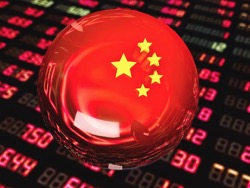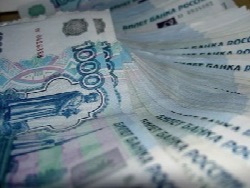Elena Platonova
 Shutterstock
Shutterstock
Chinese banks are more willing to lend to non-banking institutions — brokerage houses and lenders, which are intermediaries between banks and business. Volume of the shadow economy has reached almost $7 trillion. Analysts have warned that a credit bubble can become “black Swan”, which will bring down the economy of China.
Chinese banks are rapidly expanding lending to non-Bank financial institutions. This trend can be a “black Swan” (a term that means difficult to predict and rare events with significant consequences) in the Chinese economy. This opinion expressed in the note of the British Bank Royal Bank of Scotland.
In the category of non-Bank financial institutions include British Bank institutions such as brokerage houses, management companies and lenders, which, according to Chinese law, not allowed to take deposits.
Royal Bank of Scotland notes that lending to non-banks is the most important factor for aggregate credit growth in China.
According to Moody’s Investors Service, the total shadow banking sector in China has increased in recent years, several times, up to 45 trillion yuan ($6.92 billion), which accounts for almost two thirds of the Chinese economy.
At the same time, Bloomberg notes that the volume of investments in products for managing finances (one of the most popular tools used in the shadow banking; available trust funds and brokerage firms together with the banks for sale to the public) increased by 70% in 2015, to 18.8 trillion yuan ($2.9 trillion), which is significantly ahead of the figures for the other assets being held in trust.
Lending to non-Bank financial institutions largely due to the presence of an extensive shadow banking market in China.
The country has a very strict regulation in Bank lending, and many companies face difficulties in raising funds for projects. Most often the services of non-banking financial organizations are private individuals and small businesses. Rates on such loans, though higher than in large commercial banks over 10%, with the standard within 4%, but more affordable.
The effect of the shadow financial sector in China on the country’s economy are quite noticeable. For example, in a note published earlier this year, a research group of the Chinese branch of HSBC suggested that the rapid growth of housing prices in Chinese cities Shenzhen and Shanghai was largely triggered by just the growth of the shadow banking sector.
Sharp growth of volumes of crediting of such firms carries the risk of “abrupt turn”, similar to what was observed in mid-2013, the document Royal Bank of Scotland.
Then one of the largest economies in the world faced a liquidity crisis, which led to a spike in interest rates on interbank loans: they rose with the usual 2-3 to a record 14%.
“Credit growth has led to inflation of asset prices, particularly real estate prices in first tier cities — to be confirmed in a note by HSBC. — Shanghai housing prices for the first two months of this year increased by 24%. There are signs of a speculative game, which is based on the loan boom, a flourishing shadow banking sector and the usury.
Chinese authorities have already made attempts to stop the rapid growth of shadow lending, little manageable and accurate assessment.
At the end of 2015, the Commission on regulation of Bank activity of China has announced the introduction of stringent restrictions for P2P lenders (loan sharks), which in China, there were several thousand. They were forbidden to accept deposits from individuals and to raise funds from investors.
In April the Chinese newspaper Caixin reported that as of April 14, financial institutions will have to register in state administration for industry and Commerce, but also to permit operation from financial regulators. The new rules apply as those of non-Bank financial institutions, whose lending has increased significantly over the past year, — management companies, online Finance companies, P2P lenders.
Inflating a credit bubble is fraught with the growth of risky assets, which sooner or later will fall on the shoulders of Chinese banks.
“If you talk to banks, they will say that it is someone else’s credit risk,” said Matthew Smith, financial analyst at Macquarie Group, in conversation with Bloomberg. But credit risk does not disappear. In the end, this credit risk will belong to the banks. If something goes bad, brokers do not have the necessary balance to deal with this risk, someone will have to come and take it for themselves”.
The Chinese economy is sending alarming signals. According to official data, the volume of non-performing loans in Chinese commercial banks jumped by 51% to 1.27 trillion yuan, by the end of 2015. This is the worst result over the last ten years.
According to estimates brokerage CLSA, the volume of overdue loans in the shadow banking sector is estimated at 4.6 trillion yuan ($730 billion).
The potential size of losses could reach $440 billion thus, according to the lead of the CLSA strategist Francis Cheung, the shadow number of overdue loans continues to increase and could rise from the current 15% to 25% of total loans in this segment.
“If calculations are correct, I think you’ll see a big impact on banks, especially on small,” — says the Director of the Sanford C Bernstein Hong Kong Wei HOU in conversation with Financial Times. In his opinion, a small financial institution, faced with the impact of the bursting credit bubble in shadow banking, may be faced with the necessity of recapitalization.
Loss will have a significant impact on China’s economy, predicts credit analyst at the Singapore branch of Commerzbank, Sangli Hae. According to him, the fall of shadow lending may start a chain reaction across the banking sector in China.








